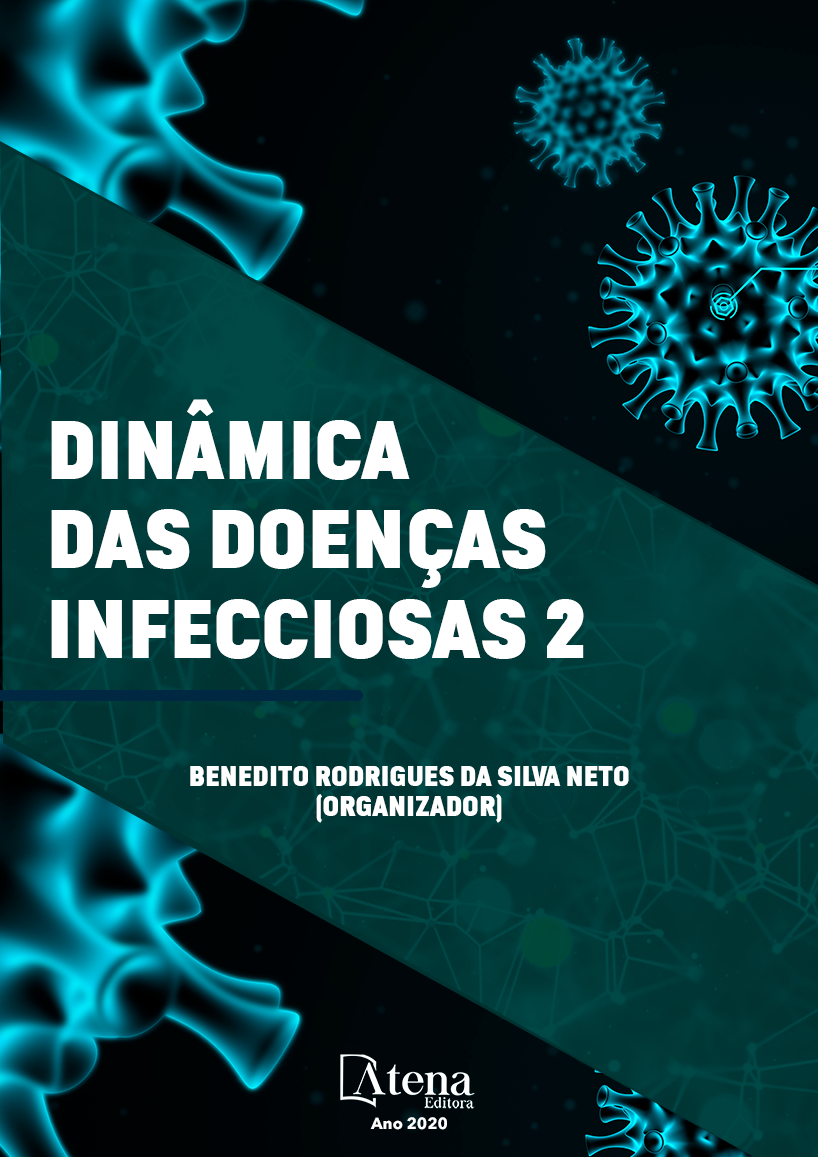
CHARACTERIZATION OF THE NUTRITIONAL STATE OF HANSENIASIS CARRIERS PERFORMING TREATMENT IN A REFERENCE AMBULATORY
1. INTRODUÇÃO
A Hanseníase e o tratamento poliquimioterápico propiciam à ocorrência de diversos distúrbios nutricionais com destaque as modificações de massa corporal podendo influenciar negativamente na resposta imunológica agravando a doença (VÁZQUEZ et al., 2011). Neste sentido é imprescindível avaliar o estado nutricional destes pacientes com destaque ao Índice de Massa corpórea (IMC) por ser de fácil aferição e baixo custo, possibilitando o rápido diagnóstico e efetiva intervenção nutricional.
2. METODOLOGIA
Estudo descritivo de corte transversal realizado com 45 pacientes de ambos os sexos portadores de hanseníase realizando tratamento ambulatorial em Belém/Pará. Foram incluídos no estudo indivíduos que atendiam aos critérios de inclusão e assinaram o Termo de Consentimento Livre e Esclarecido (TCLE). A avaliação do estado nutricional foi realizada a partir do IMC sendo utilizados para o diagnóstico nutricional os valores propostos pela organização mundial da saúde (1995), para adultos, e Lipschitz (1944) para idosos.
3. RESULTADOS
Verificou-se que 27 eram do sexo feminino e 18 do sexo masculino, na análise da faixa etária por sua vez verificou-se que 39 eram adultos, com idade entre 22 e 57, e 6 eram idosos com idade entre 61 e 75 anos. No que se refere à avaliação do estado nutricional verificou-se que entre os adultos 4,4% (n=2) encontravam-se com desnutrição, 13,3% (n=6) com eutrofia, 57,8% (n=26) e 11,1% (n=5) com sobrepeso e obesidade, respectivamente. Por sua vez, entre os idosos averiguou-se que 4,5% (n=2) estavam eutroficos e 8,9% (n=4) sobrepeso não sendo identificado nenhum baixo peso.
4. CONCLUSÃO
A partir disso, observa-se que a maioria dos portadores de hanseníase avaliados apresenta sobrepeso. Assim o IMC constitui-se em uma ferramenta segura e eficaz para a determinação do estado nutricional do paciente, facilitando a imediata intervenção, a fim de que alterar o quadro do paciente à eutrofia, prevenindo morbidades e aumentando a expectativa e qualidade de vida.
CHARACTERIZATION OF THE NUTRITIONAL STATE OF HANSENIASIS CARRIERS PERFORMING TREATMENT IN A REFERENCE AMBULATORY
-
DOI: 10.22533/at.ed.0252016049
-
Palavras-chave: Antropometria, Estado Nutricional, Hanseníase
-
Keywords: Anthropometry, Nutritional Status, Leprosy.
-
Abstract:
1. INTRODUCTION
Leprosy and multidrug treatment lead to a number of nutritional disorders, especially body mass changes, which can negatively influence the immune response and aggravate the disease (VÁZQUEZ et al., 2011). In this sense it is essential to evaluate the nutritional status of these patients with emphasis on Body Mass Index (BMI) because it is easy to measure and low cost, enabling rapid diagnosis and effective nutritional intervention.
2. METHODOLOGY
A cross-sectional descriptive study was carried out with 45 patients of both sexes with leprosy undergoing outpatient treatment in Belém/Pará. Were included in the study individuals who met the inclusion criteria and signed the Informed Consent Form (TCLE) were included in the study. The evaluation of the nutritional status was carried out from the BMI and the values proposed by the World Health Organization (1995) for adults and Lipschitz (1944) for the elderly were used for nutritional diagnosis.
3. RESULTS
It was found that 27 were female and 18 male, in the analysis of the age group it was found that 39 were adults, with ages between 22 and 57, and 6 were elderly with ages between 61 and 75. Regarding the evaluation of the nutritional status it was found that among adults 4.4% (n=2) were malnourished, 13.3% (n=6) with eutrophy, 57.8% (n=26) and 11.1% (n=5) with overweight and obesity, respectively. Among the elderly, 4.5% (n=2) were eutrophic and 8.9% (n=4) were overweight and no low weight was identified.
4. CONCLUSION
From this, it can be seen that the majority of leprosy carriers assessed are overweight. Thus BMI is a safe and effective tool for determining the nutritional status of the patient, facilitating immediate intervention to change the patient's condition to eutrophy, preventing morbidities and increasing life expectancy and quality of life.
-
Número de páginas: 4
- Elaine Cristina Silva Soares
- Agostilina Renata Dos Santos Da Cruz Ramos
- Emmely Belize de Souza Pereira
- Suzan dos Santos Ferreira
- Elen Cristina Braga de Souza
- Hellen Ruth Silva Corrêa
- Samara da Silva Queiroz
- Cyntia Tayane Dias de Araujo
- Lucidéa Rocha de Macedo
- Débora Lopes Mattos
- Rosileide de Souza Torres
- Alicia Gleides Fontes Gonçalves


